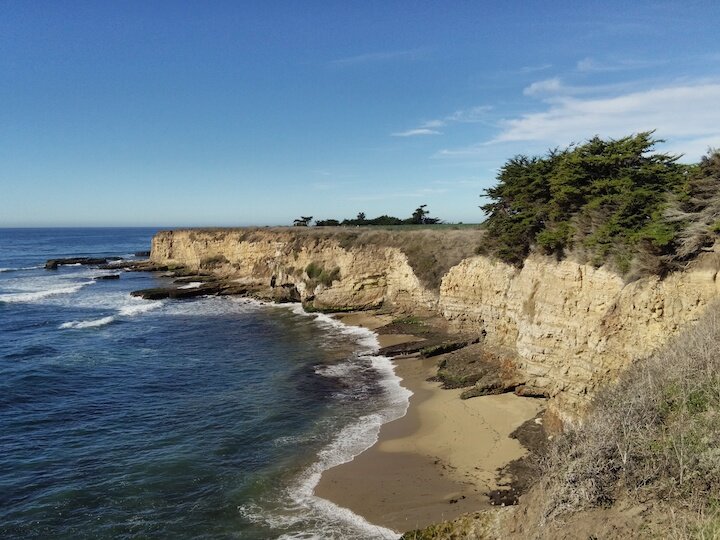May 2021 Science Corner | “Incorporating blue carbon sequestration benefits into sub-national climate policies”


While forests and terrestrial ecosystems are an important component, a recent study, “Incorporating blue carbon sequestration benefits into sub-national climate policies,” has shown how coastal ecosystems could be key to scaling up carbon sequestration.
Authors: Lisa Wedding, Monica Moritsch, Gregg Verutes, Katie Arkema, Eric Hartge, Jesse Reiblich, James Douglass, Sophie Taylor, Aaron Strong
Interview and story by: Tessa Maurer
The science is clear: if we want to reach the climate change goals laid out in the 2015 Paris Agreement, carbon sequestration must be part of the portfolio. It is not enough to only reduce emissions; countries must find ways of actively capturing and removing carbon from the atmosphere. While forests and terrestrial ecosystems are an important component, a recent study, “Incorporating blue carbon sequestration benefits into sub-national climate policies,” has shown how coastal ecosystems could be key to scaling up carbon sequestration. (Read a research brief by Stanford Woods Institute for the Environment here.)
The moniker “blue carbon” refers to carbon sequestered in environments that are inundated with water all or part of the time. These include, for example, mangroves, tidal marshes, and seagrass ecosystems. Although most of us may think about planting trees when we think about sequestering carbon, coastal vegetation can actually trap 100 times more carbon per acre than land forests. Dr. Monica Moritsch, a co-author on the paper, explained why. “These ecosystems sequester carbon in their plant tissues through photosynthesis; that plant matter then dies and falls into the wet soil below. The water-logged soil slows down decay. It doesn’t go anywhere, so that carbon can get stored for millennia. The other main pathway through which they store carbon in sediment is vegetation sticking up in the water that slows down the flow in the ocean. That can cause some sediment to drop out and settle at the bottom of the water. That will build up year over year.”
The authors, including Blue Forest collaborator Gregg Verutes, looked at three tidal marshes – areas that see changes in inundation based on the tides – along the coast of California. Using a model, they found that the total carbon dioxide sequestered by the three sites by 2100 would range between 10.5 to 44 million metric tons. For comparison, the city of San Francisco released about 5.1 million metric tons of CO2 equivalent in 2017, and the total area of the tidal marshes evaluated was <15% of the area of San Francisco. Given this potential, the authors call for more policy attention on marine ecosystems to be leveraged in fighting the climate crisis.
One major finding was that policies on a subnational level – state governments in the U.S. – can be key players in promoting blue carbon, regardless of what’s happening on the federal level. As states set their own climate policy goals, they can create holistic approaches that consider not only land carbon, but marine ecosystems as well. Plans should recognize the links between atmospheric and marine carbon sequestration: in other words, if we want to remove carbon from the atmosphere, we should look to both the land and sea for sequestration opportunities. States can then take actions in a number of ways, including expanding protected areas and identifying areas with high potential for carbon sequestration in order to prioritize them for conservation and restoration actions.
Just like the forest restoration projects Blue Forest works on, this work comes with co-benefits. “There’s coastal protection that these ecosystems provide,” said Dr. Moritsch. “There’s a lot of evidence that these ecosystems will attenuate wave energy – they’ll slow down and de-energize that water motion as it’s coming towards shore. On the East Coast there’s been a lot of interest in how marshes protect people during hurricanes.” In addition, the paper notes, tidal marshes and seagrass ecosystems have the potential to reduce the effects of ocean acidification and coastal hypoxia (where ecosystems become deprived of oxygen). Indeed, the authors found that considering the social cost of carbon – which reflects the burdens that our systems and we as citizens bear from each additional ton of carbon in the atmosphere – can increase the value of coastal carbon sequestration by up to 2.7 times the strict market value. Their findings speak to the importance of models that can broadly incorporate the multiple benefits of restoration, like the Forest Resilience Bond does for terrestrial forests. As Blue Forest grows, perhaps Coastal Resilience Bonds are in our future!